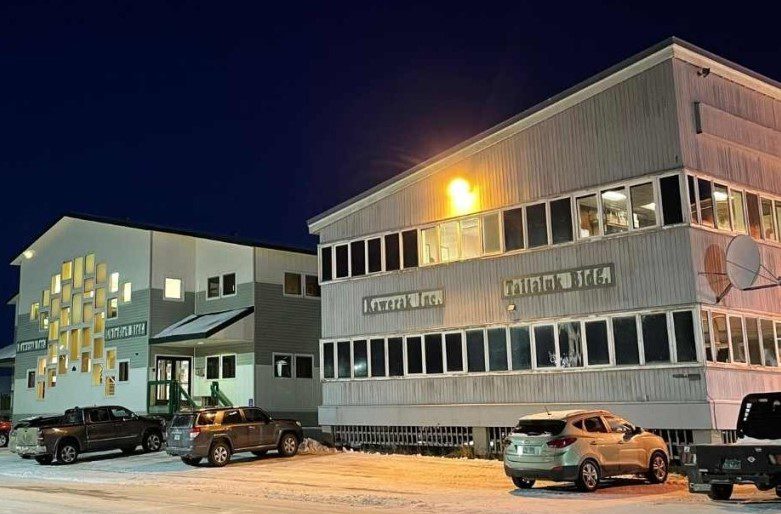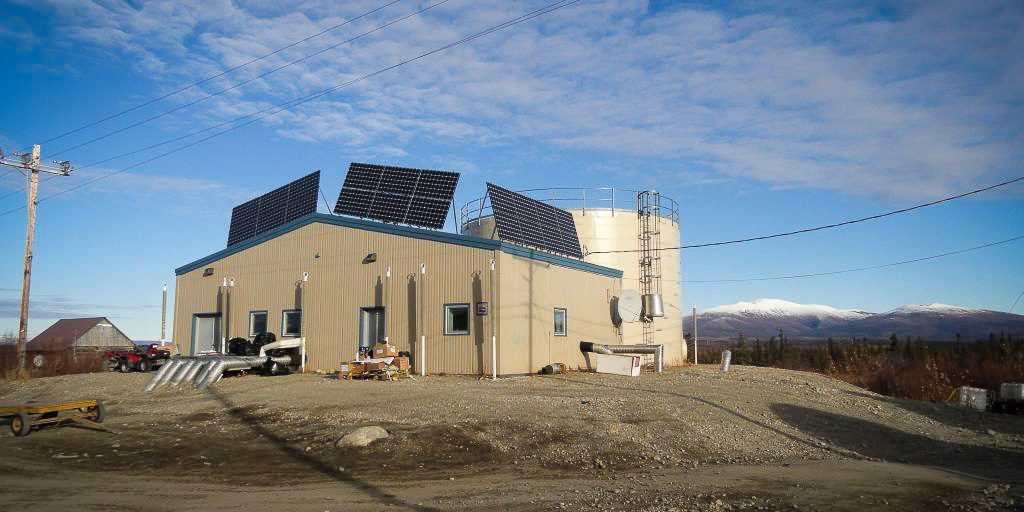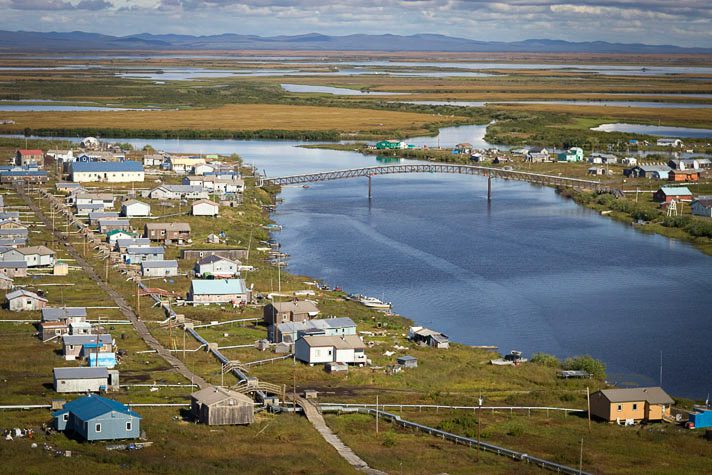Solar panels will soon help power three communities in the Alaskan Arctic. The Department of Energy awarded federal funding to install panels in Kotzebue, Buckland and Deering, but decreasing the region’s dependency on diesel is easier said than done.
Energy costs are notoriously high in rural Alaska, where diesel is often barged up to remote communities. Sonny Adams is the Director of Alternative Energy for NANA, the regional corporation for the Northwest Arctic Borough. Adams was born and raised in Kotzebue.
“The cost of living in our region is 60% higher than it is in Anchorage,” Adams explained. “Our people are having to make tough choices between putting food on the table or heating their home.”
While the price of diesel has dropped in recent years, Adams said climate change has made fuel deliveries more expensive.
“We’re not seeing the snowfall that we used to in the past,” Adams said. “Whenever that happens, you’re not getting the high river levels that you’re used to to barge up the fuel.”
The low water levels are forcing some up-river communities like Kobuk and Ambler to fly in fuel at a much higher cost. That’s one of the reasons Adams is looking towards renewable energy sources like wind and solar.
NANA Corporation was recently awarded $1 million from the Department of Energy to partially fund solar panel installations in Kotzebue and two nearby communities—Buckland and Deering. Adams said all three already have wind turbines that help offset the high cost of energy.
“So solar is just the next viable option,” explained Adams.
Ingemar Mathiasson couldn’t agree more. He’s the Energy Manager for the Northwest Arctic Borough based in Kotzebue.
“There’s no reason for us to just sit and just wait for more oil to come down the pipeline,” Mathiasson said. “In some respects, that’s a pipe dream.”
Originally from Sweden, Mathiasson moved to the Alaskan Arctic in the late 80s. He’s been living off the grid and on solar power for decades, but he said those indigenous to the region have been doing it for far longer.
“Pre-contact, the people in Alaska were the most energy efficient people anywhere, being able to live in the Arctic on almost nothing, with very energy efficient houses and energy-efficient living,” Mathiasson explained.
But oil changed all that. Mathiasson pointed towards far off places like Saudi Arabia that now supply diesel to remote communities like Selawik and Shungnak. With funding from the Department of Energy, both Mathiasson and Sonny Adams hope to power communities in the Northwest Arctic from more local sources.
Doug MacCourt from the Department of Energy said community-driven projects like the one Adams is spearheading is just what rural Alaska needs.
“Solutions that work are solutions that come from Alaska, solutions that are designed and thought of and conceived and really baked in the communities,” MacCourt insisted.
That’s easier said than done said David Nicol. Nicol works for an energy consulting firm based in Washington state. He helps plan and implement solar projects in rural Alaska. Nicol said when companies don’t shop around for the best deals, costs can soar.
“Companies here need to figure out how to install it for cheaper,” Nicol said. “It is possible, but we need to stop trying to reinvent the wheel.”
Nicol said training locals on installation and upkeep is the key to solar’s success. Right now, he explained the lack of institutional knowledge in the state is keeping costs high.
“If I could have one wish right now it would be that every single time somebody in Alaska encounters a problem with solar, whether it’s legislative, insurance, financing, building, just go, ‘Okay, this problem has been encountered before by others. Let’s go find out how they solved it,'” Nicol urged.
Because of all the obstacles, Nicol said powering communities solely by solar power is a still a long way off.
“Realistically, rural Alaska is not going to completely get away from diesel for a long time,” Nicol said. “It’ll come eventually, but it’s not going to be anytime soon.”
In the meantime, Sonny Adams is keeping his focus on solar. He’s working to finalize the finances of the solar project. Adams said rural Alaska has to keep pushing forward.
“We know that we cannot promote economic development with high energy costs,” Adams insisted. “We have got to get off this diesel fuel.”
Construction on the new solar panels in Kotzebue, Buckland, and Deering is set to begin in the spring of 2018.







